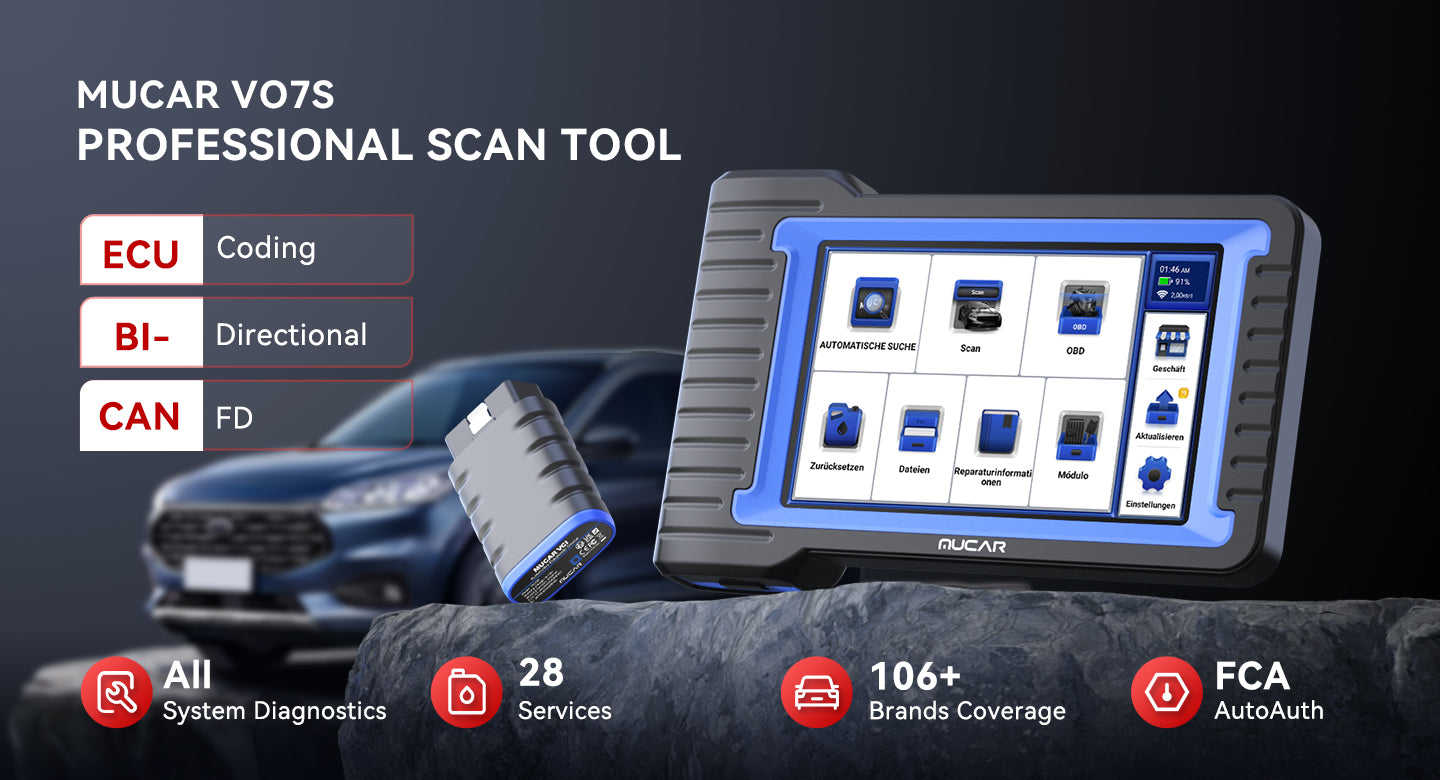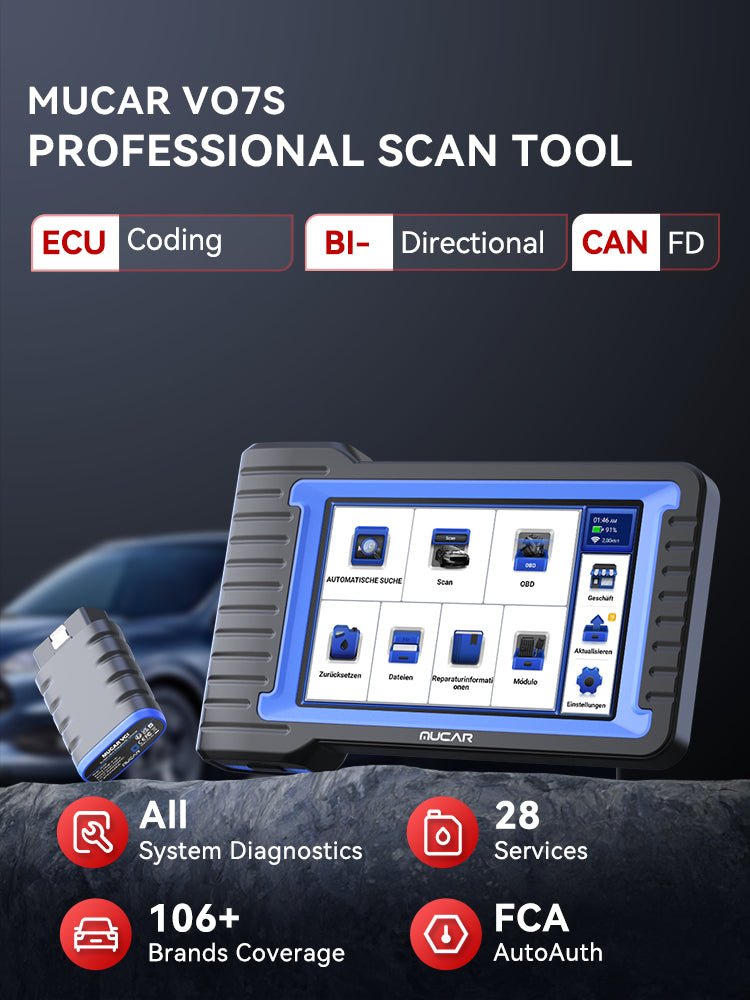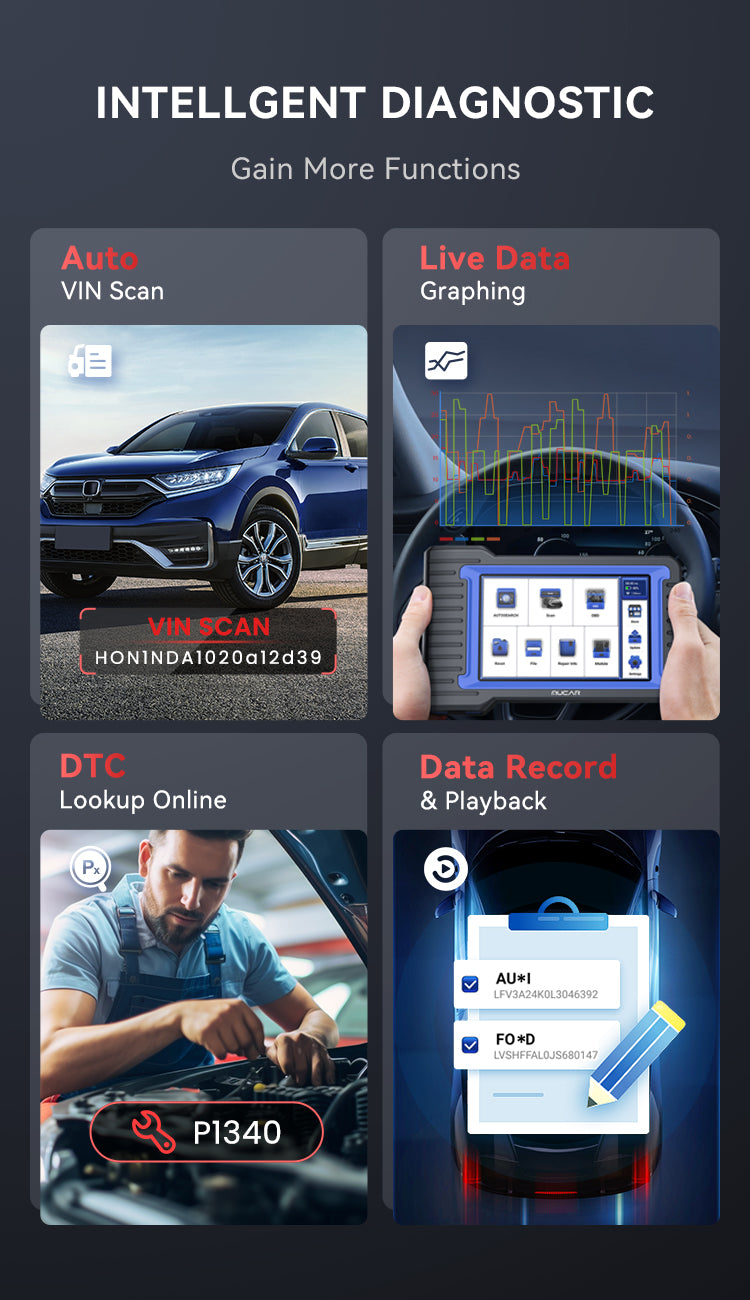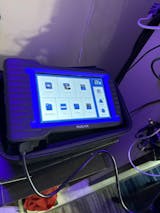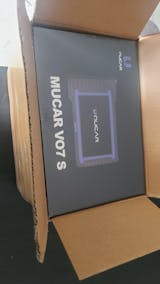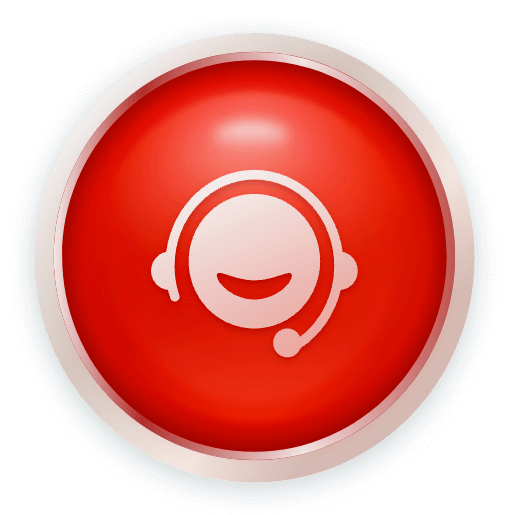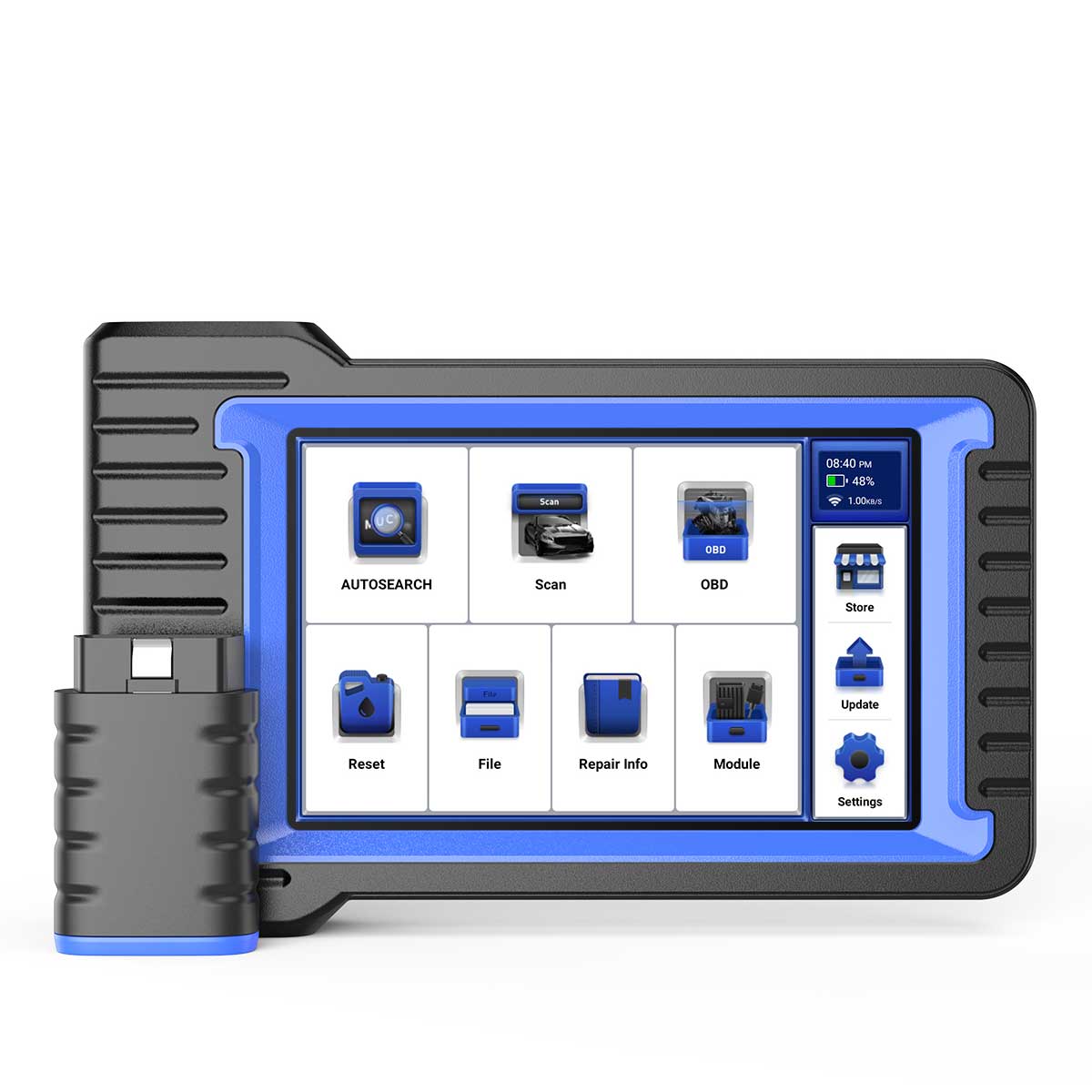
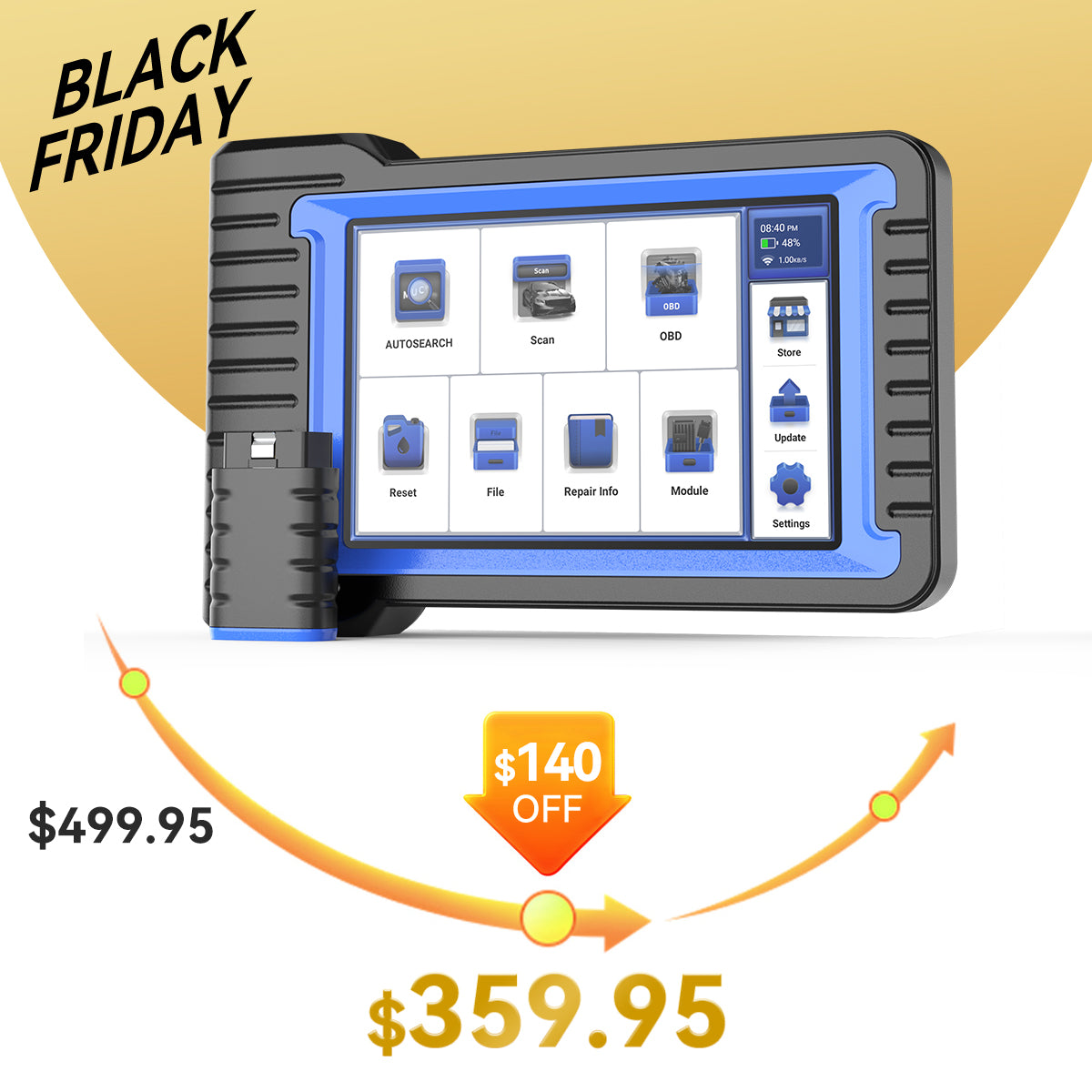
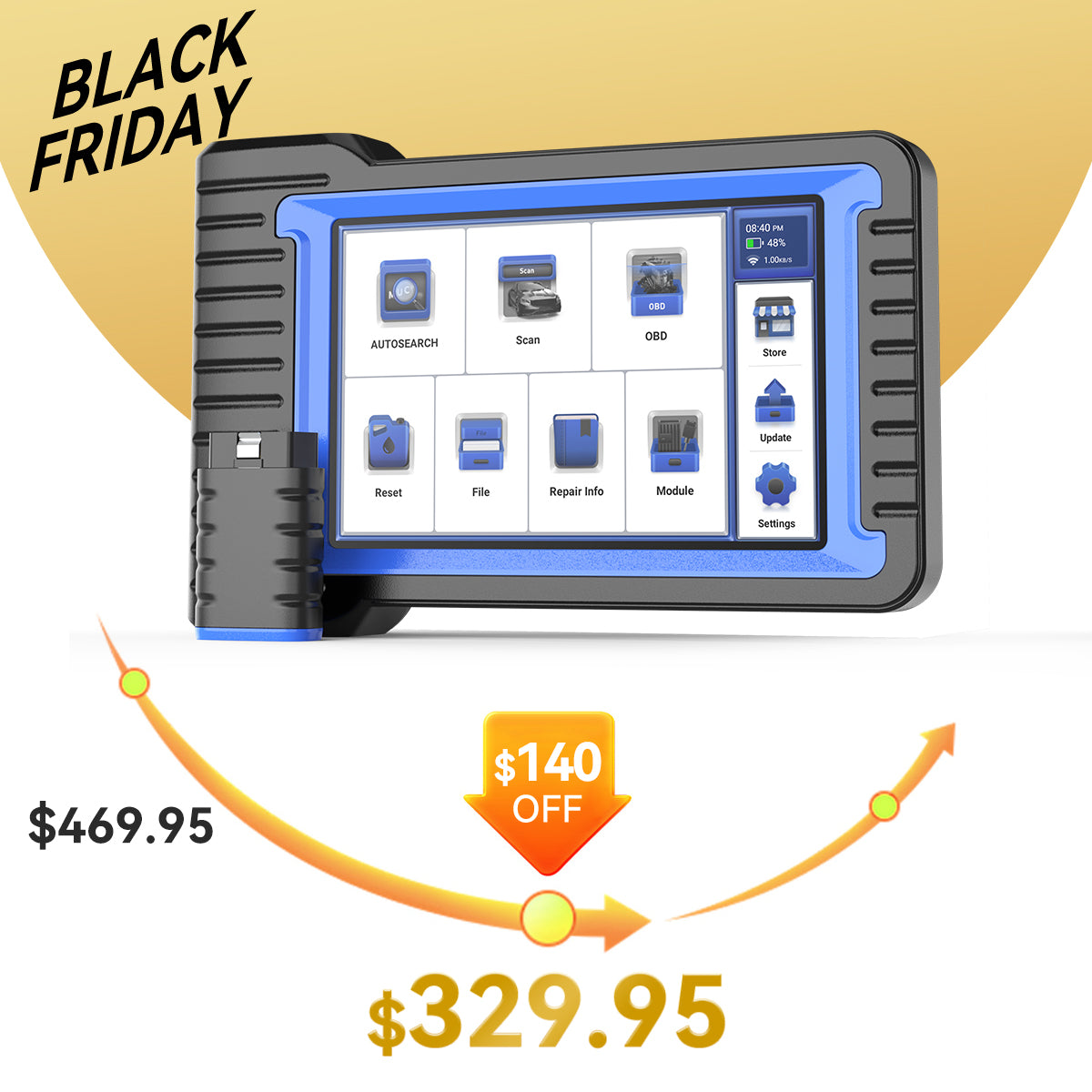
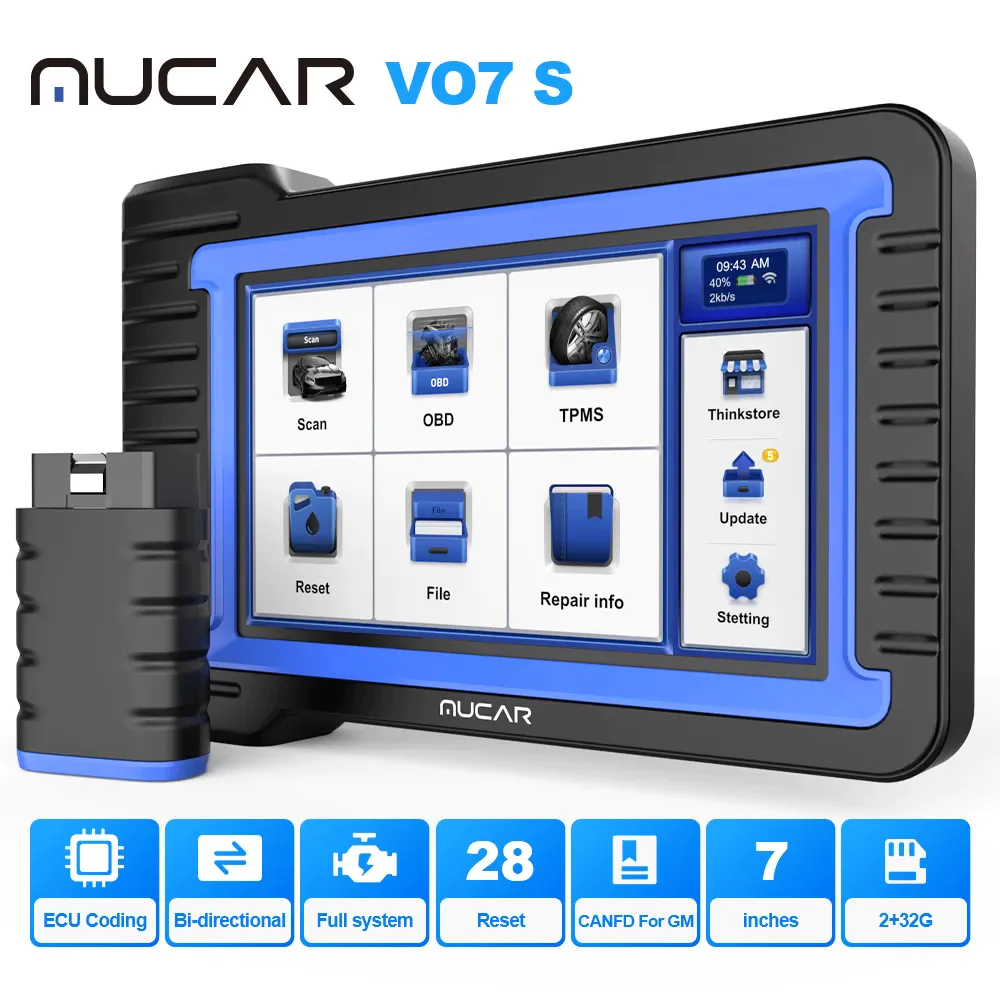
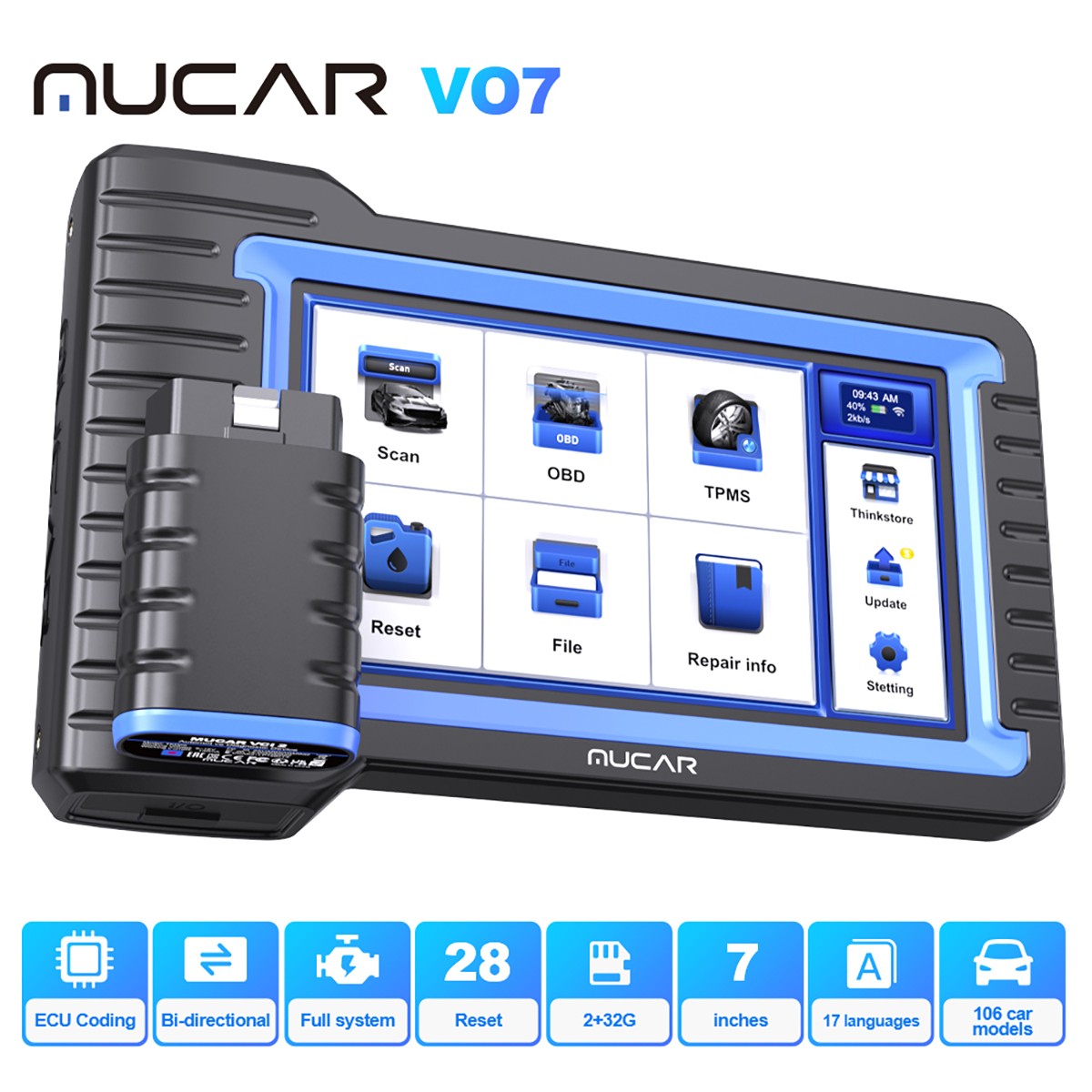
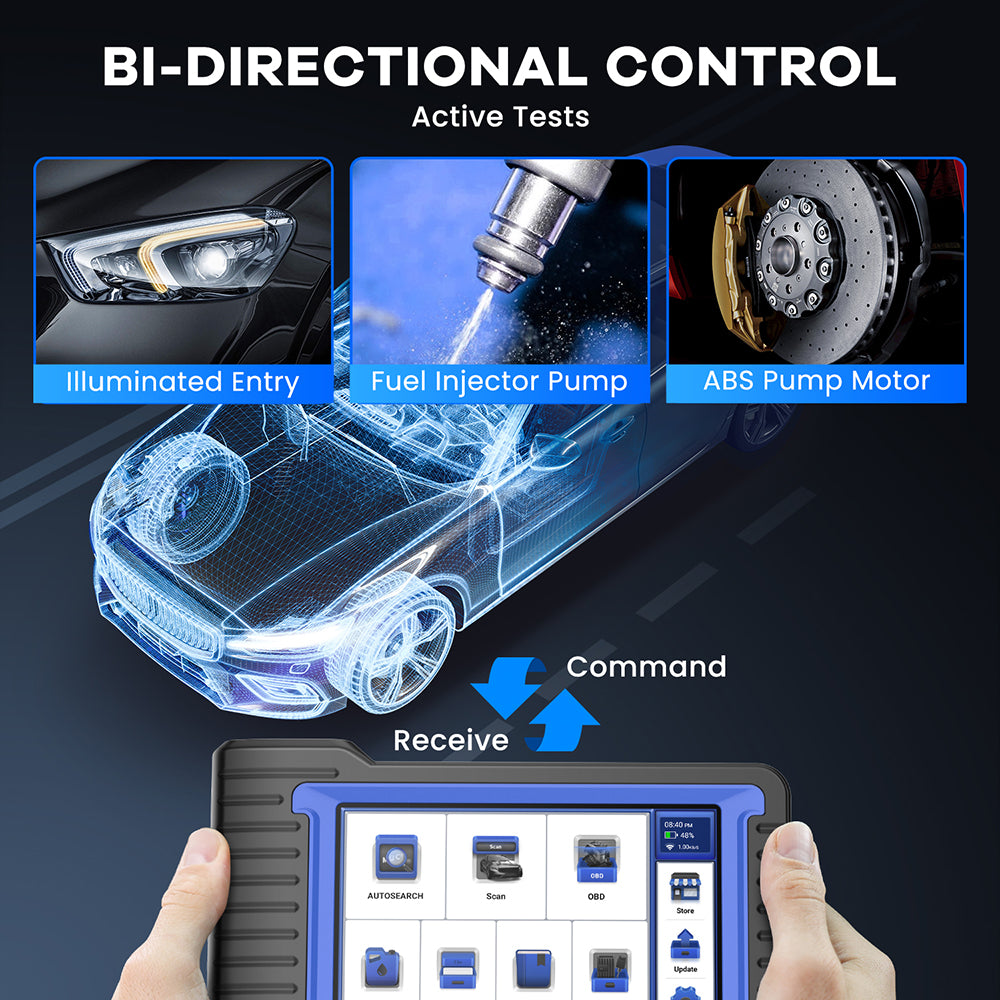

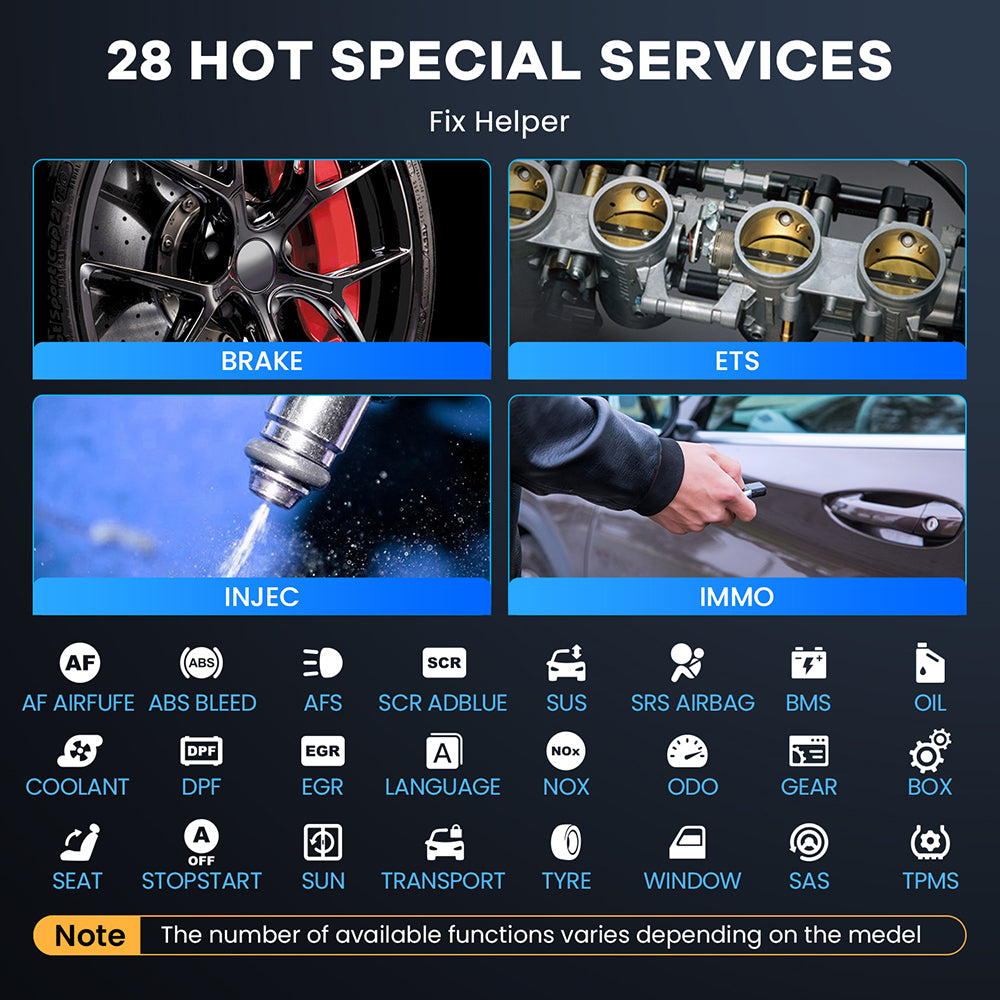
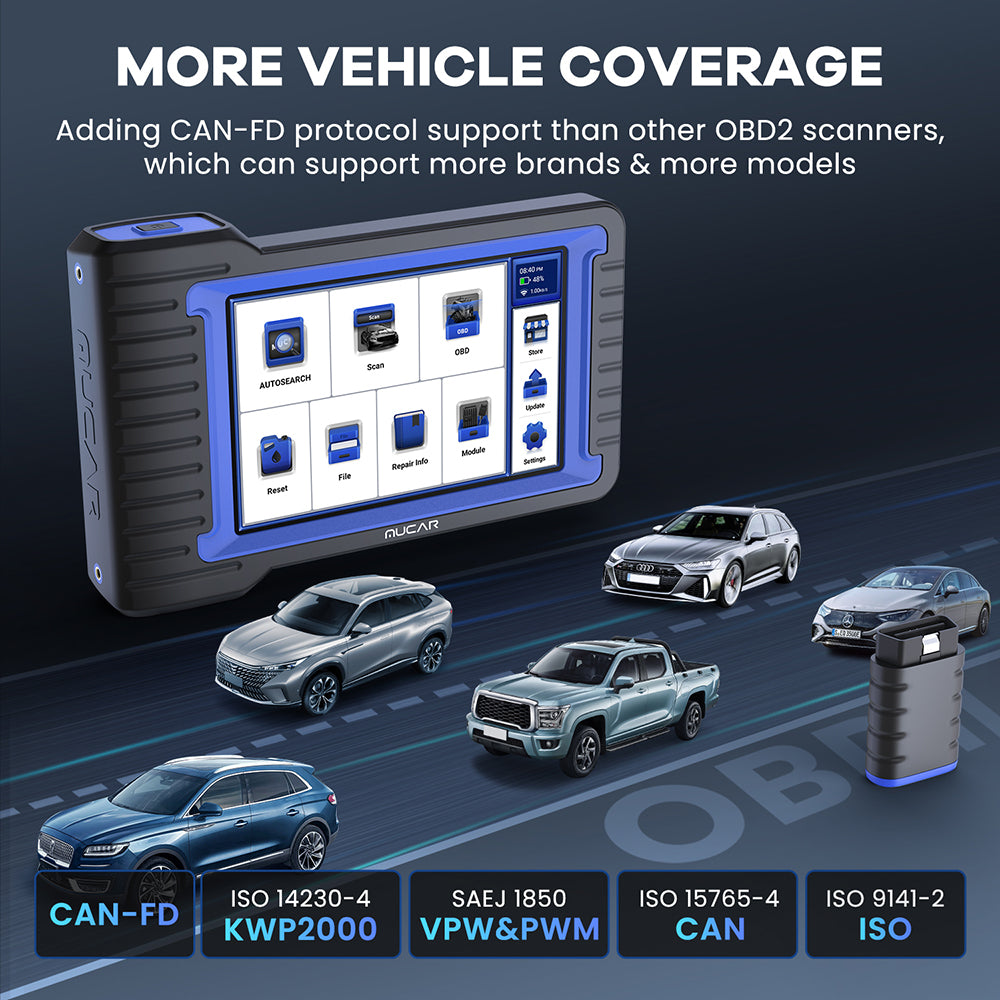
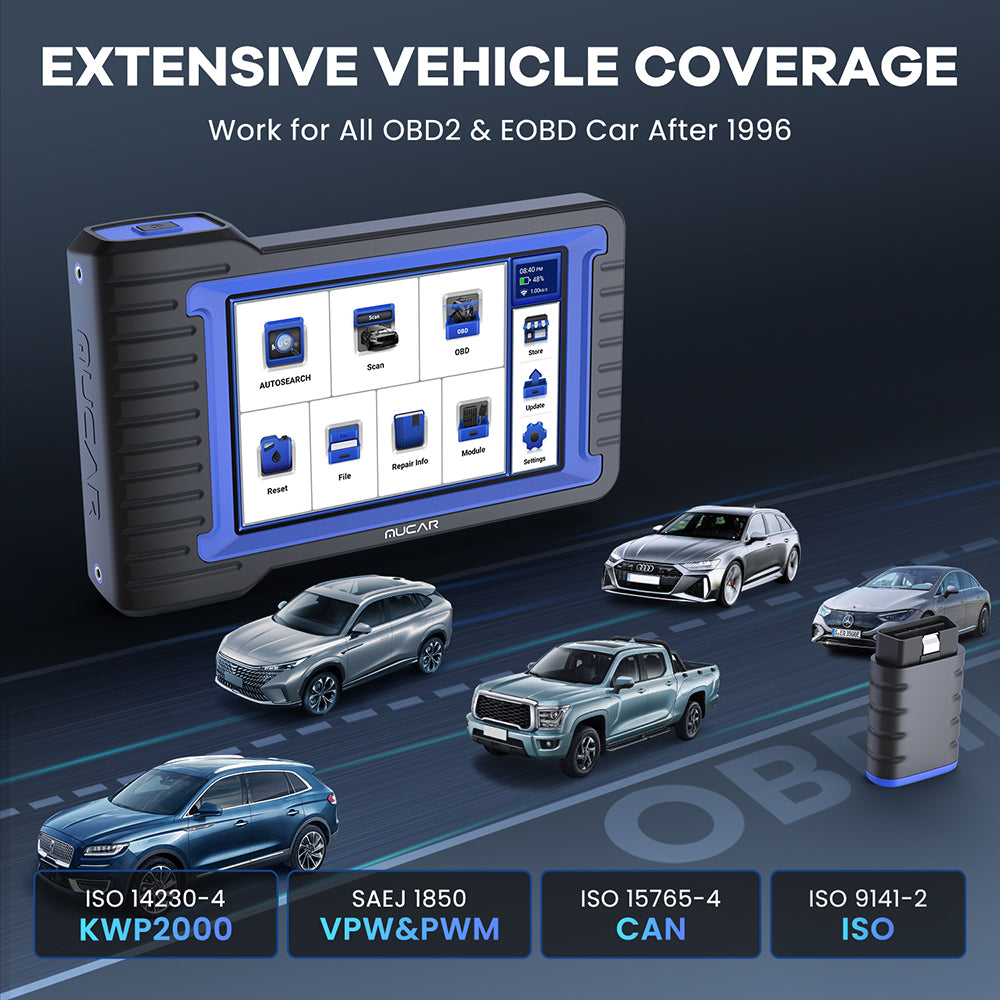
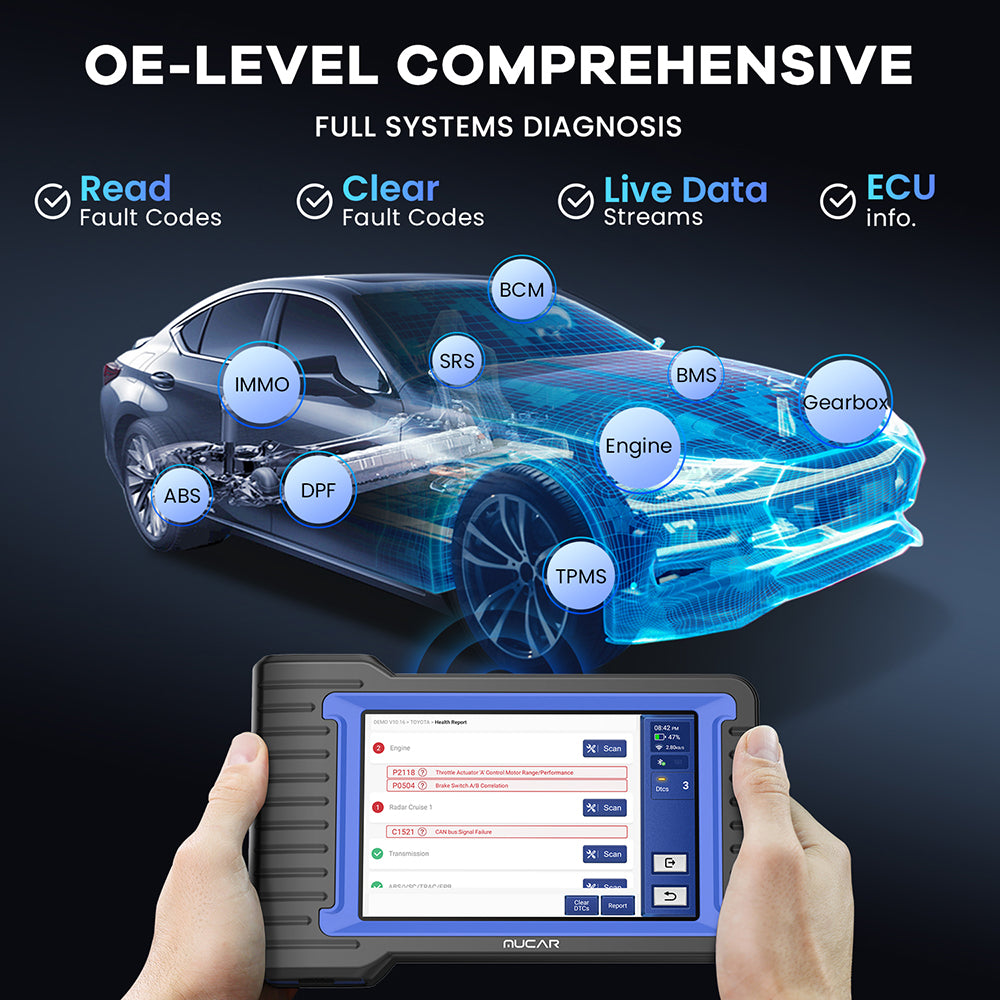
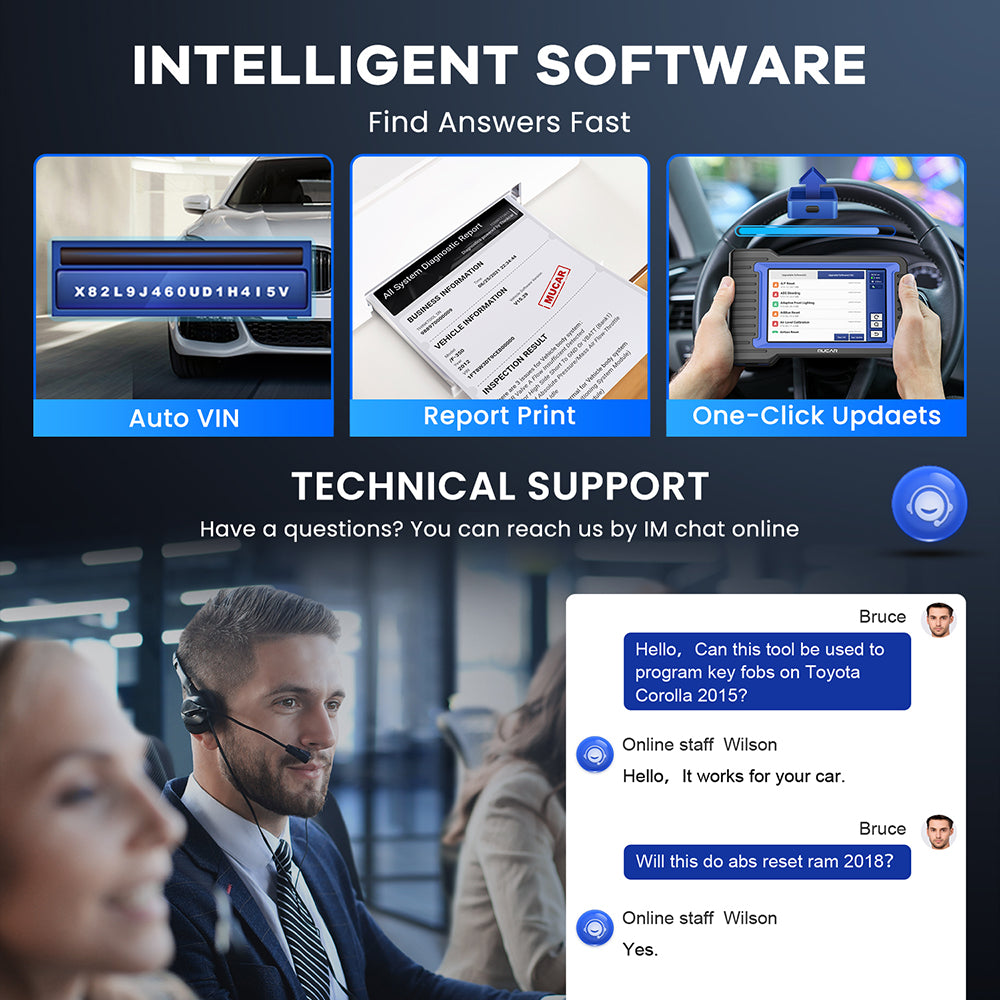
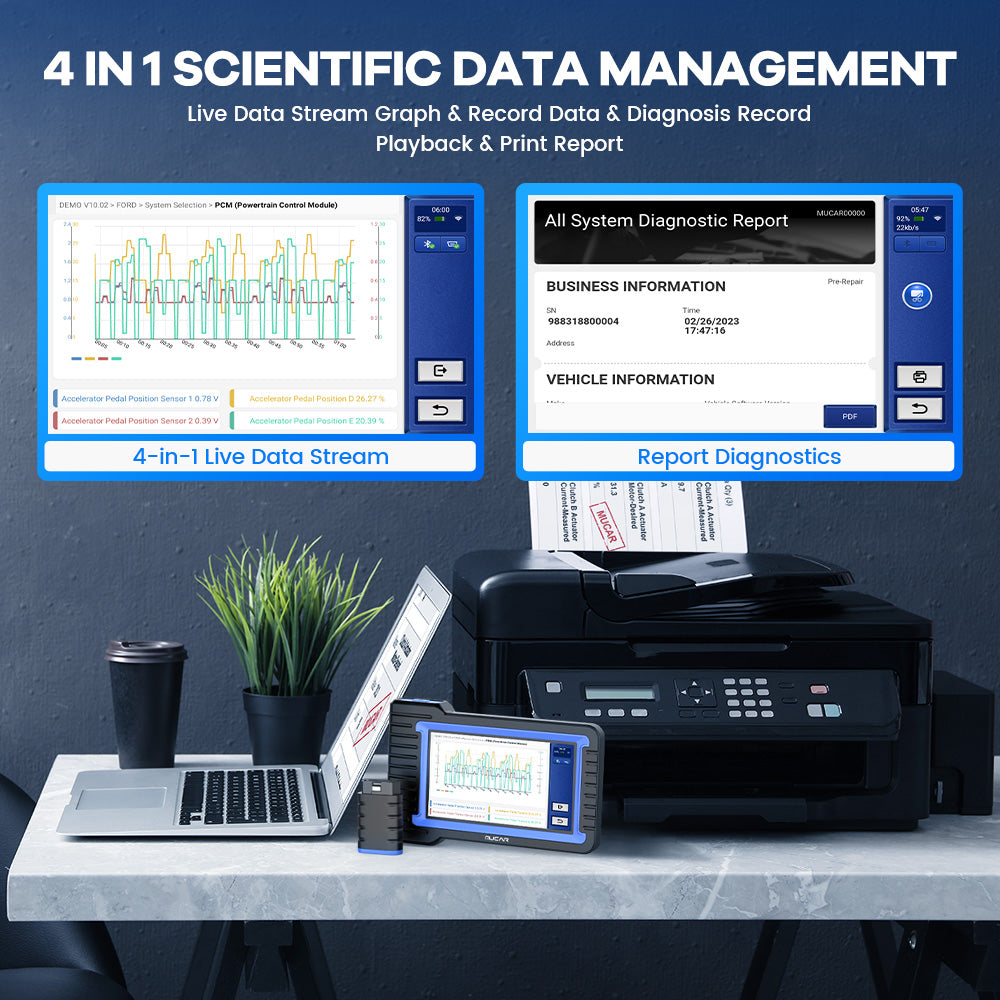
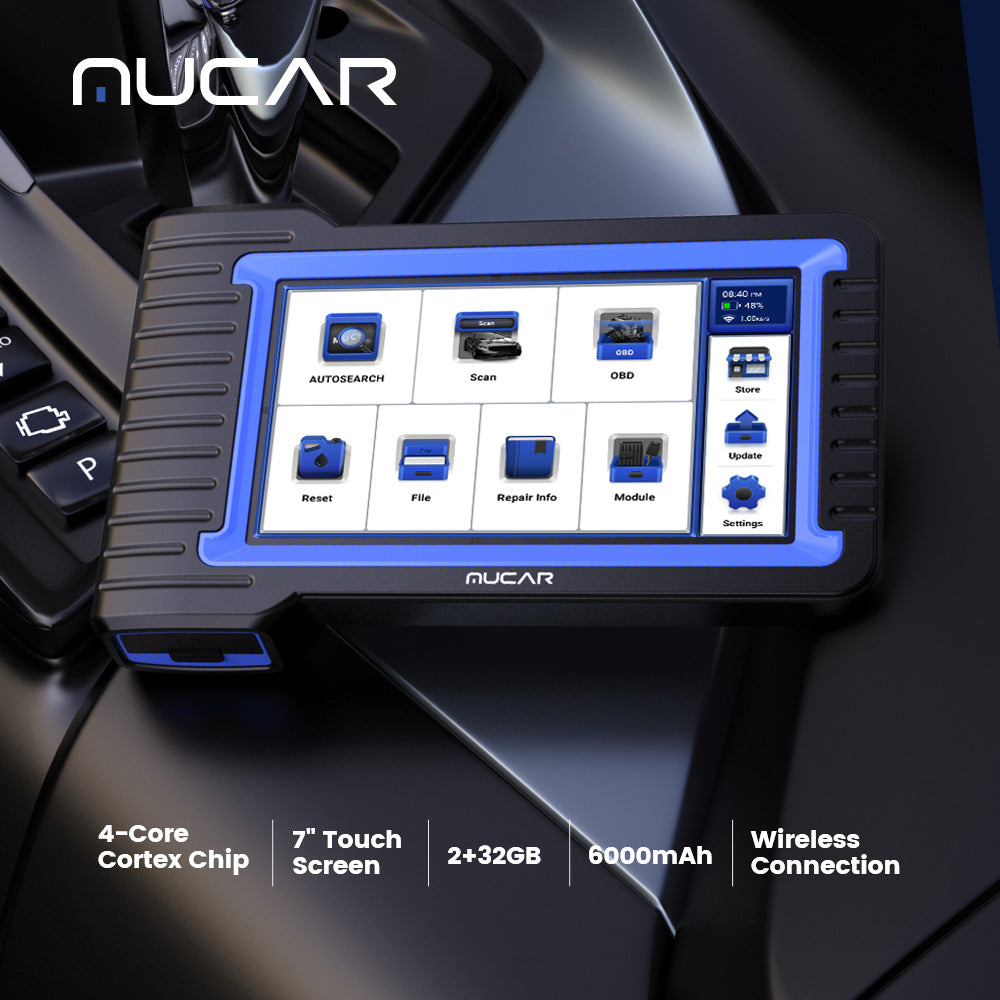
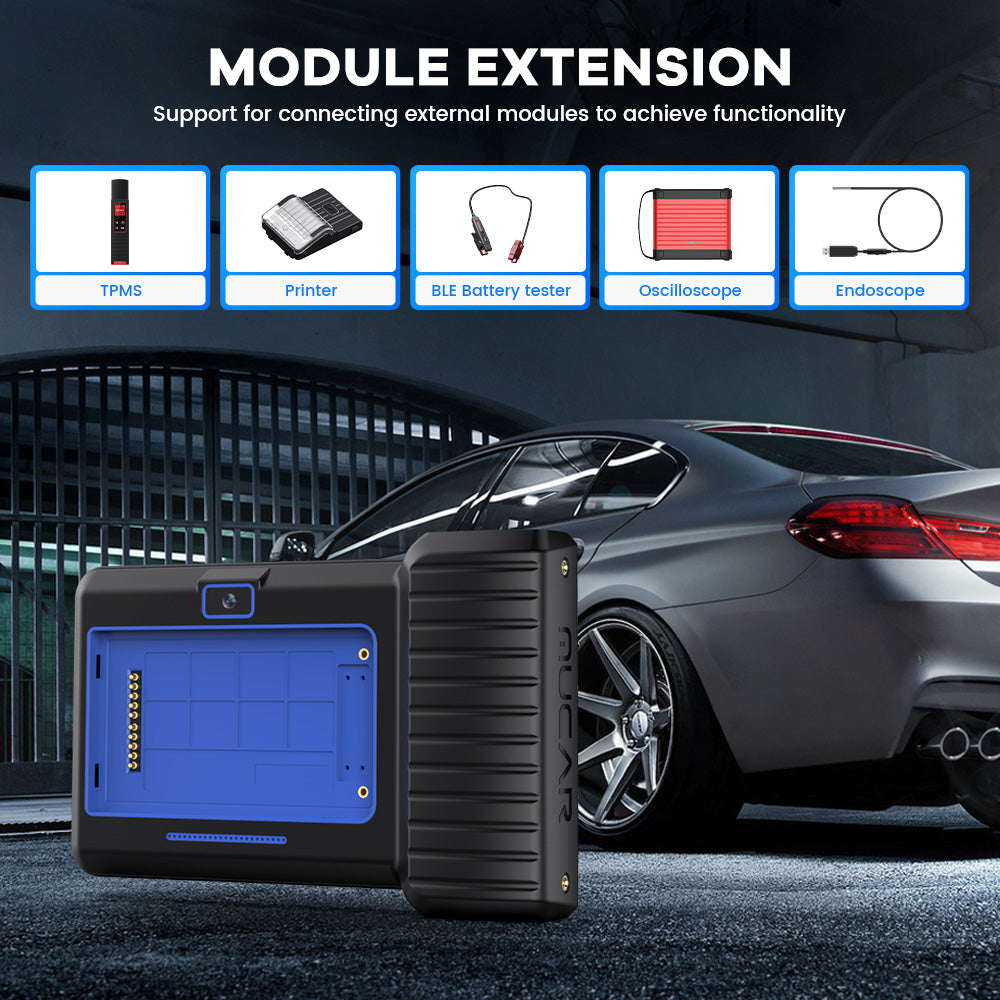

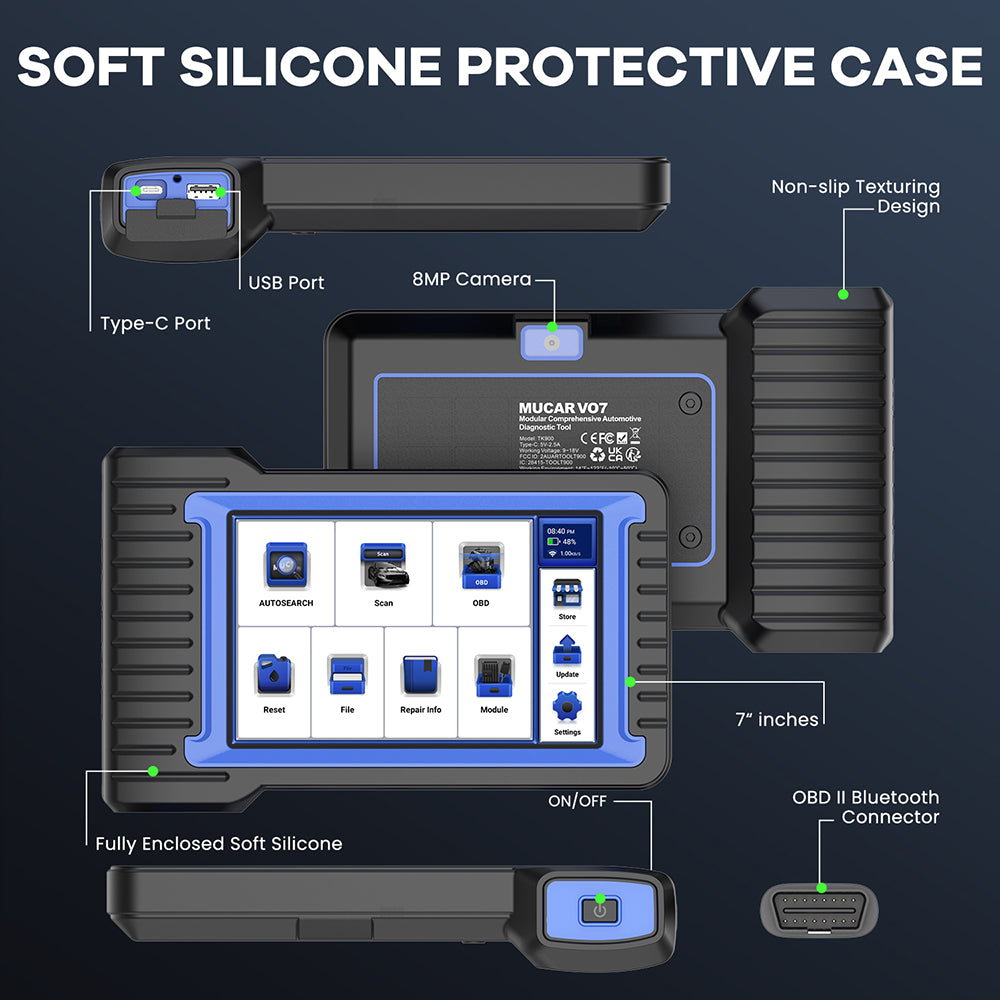

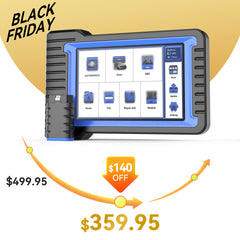
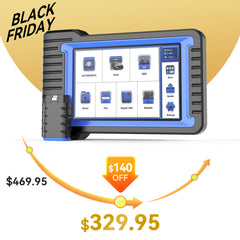
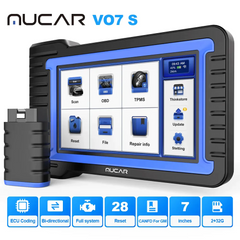
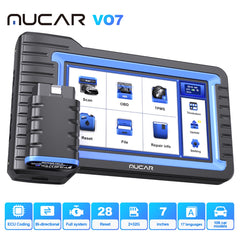
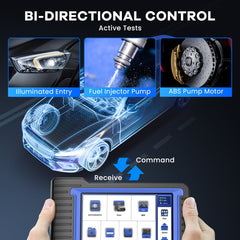
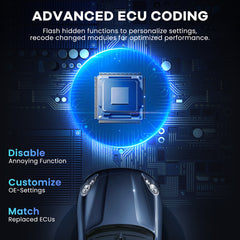
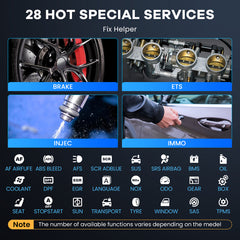

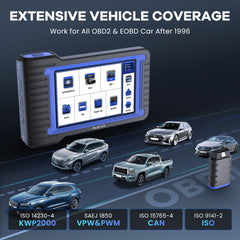
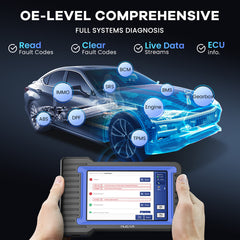
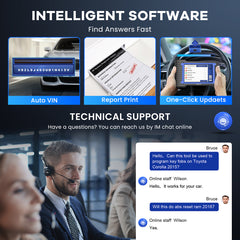
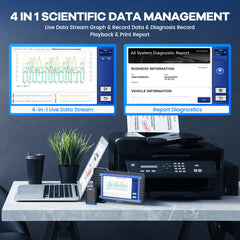
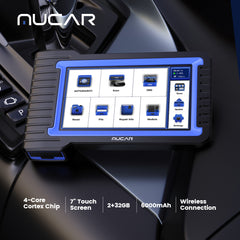
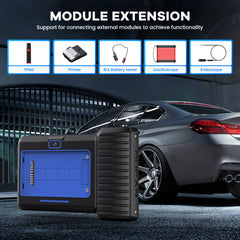
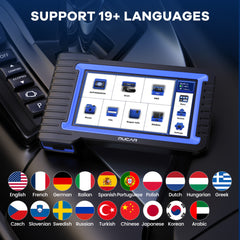
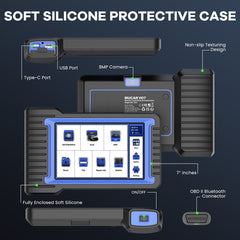
MUCAR VO7 S
- $399.95
$499.95- $399.95
- Unit price
- per
$40
OFF
BFCM-40
• Enjoy lifetime free updates with the latest upgrade.
• MUCAR VO7 S supports CAN-FD, MUCAR VO7 doesn't support CAN-FD, MUCAR VO7 S adds more cars than MUCAR VO7
• ECU Coding+Bi-Directional/Active Test
• 28+ most popular reset functions, lifetime free
• OE-Level All-Systems Diagnostic
• Support 106+ major car brands and 20+ languages
• 7-inch Touch Screen + 2G/32G Memory
Fast Shipping
2-7 Days Fast Shipping to US/EU
24/7 Remote diagnosis
12-Month Warranty
30-Day Free Returns
Why Choose MUCAR VO7 S OBD2 Scanner?
Smartest, Fastest, Easy-To-Use & Cost-Effective Car Diagnostic Tool
MUCAR VO7 S automotive OBD2 scanner is compatible with CAN-FD protocol and supports the latest For GM vehicles manufactured after 2020. , (MUCAR VO7 does not support CAN FD)
ECU Coding+Bi-Directional/Active Test
28 most popular reset functions, lifetime free
OE-Level All-Systems Diagnostic, easily understand the vehicle's condition
Cover 106+ car brands, more brands continue to update
Logically-laid out easy menus, plus larger 7” TouchScreen, Android 2G /32G memory, and 6000mAh battery capacity, for All-Day good job
Connecting a variety of external function modules, such as a printer, oscilloscope, ble battery, endoscope, TPMS device
Supports 20+ languages, eliminating language barriers. English, French, German, Italian, Spanish, Portuguese, Polish, Dutch, Hungarian, Slovakia, Greek, Czech, Swedish, Russian, Turkish, Chinese, Japanese, Korean, Indonesian, and Arabic, more languages are being added, so stay updated
One Purchase, Forever Updated: Enjoy lifetime free software updates for your MUCAR VO7/VO7S with no renewal fees. Enjoy the peace of mind that comes with a device that stays up-to-date for years to come.
What's the Difference between MUCAR VO Series?
ECU Coding (Customize)
Customize your car easily, make your work easier, and help you win more businesses. MUCAR VO7 S scan tool equips advanced ECU Coding function for addressing the following issues:
Vehicle performance adjustment: By modifying the parameters of ECU, it can adjust the engine output power, torque curve, fuel injection amount, etc. to improve the vehicle performance and driving experience.
Fuel Economy Optimization: By adjusting the parameters of the ECU, the fuel injection strategy, ignition timing, etc. can be optimized to improve fuel economy and reduce fuel consumption.
Troubleshooting and Repair: ECU CODING can be used to read and clear fault codes, diagnose vehicle malfunctions and perform repair operations accordingly.
Accessory Replacement: When replacing certain vehicle components, ECU CODING may be required to make them compatible with the vehicle system. Warm Tips: Before coding, please read and record the original module’s information.
Powerful Bi-directional Control
3000+ active tests, all-in-one solution, pinpointing out problem location, improving 300% efficiency!
Bi-directional control is a feature that allows for two-way communication and control between scanner and car systems. It enables drive solenoids and actuators for active testing, sending commands to the system/component to test its operating status without using the vehicle controls. By utilizing Bi-Directional Control, technicians, mechanicians, car dealers, auto repair shops, DIYers or individual owners can actively monitor and control the behavior of a system, letting you quickly understand whether a specific system, component, or subsystem is operating normally. It provides a more comprehensive and interactive approach to testing and troubleshooting, allowing for efficient identification and resolution of issues, pinpointing issues and greatly improving diagnostic efficiency.
Frequently-used Active Tests including: Evap Tests/ Purge Solenoid/ Fuel Injector Test/ Cycling A/C Clutch Relay/ Cycling Abs Motor Pump/ Cooling Fan Test/ Headlamp Test/ Sunroof/ Operate Mirrors/ Turn On The Sound Horn/ Turn On The Radiator Fan/ Open/Close Windows/ Turn On/Off The Lights/ Test Door Lock Actuators/ A/C Compressor Activation/ Modulate The Throttle/ Compression Test/ Turn On/Off Front And Rear Side Acm Solenoid/ Turn The Fuel Pump On And Off/ Cycling The A/C/ Clutch On And Off/ Left Clutch Electromagnetic Coil Test/ Acceleration Device Test/ Oil Pressure Control Test/ Dynamic Camera Aiming/ Vehicle Level Position Calibration/ Brake Vacuum Pump/ Inlet And Outlet Valve Tests/ Open Brakes Tests/ Parking Brake Botors/ Wheel Speed Sensor Supply/...
Professional OE-level all systems diagnose
With all-around & in-depth diagnoses + extra full OBD2 modes.
MUCAR VO7 S automotive scanner can scan full modules like ECM(engine), TCM(Transmission), ABS(Anti-Lock Braking System), SRS(Supplemental Restraint System), EPB(Electric Parking Brake), BCM(Body Control Module), EPS(Eletronic Power Steering), HVAC(Heat, Ventilation and Air Conditioning), TPMS(Tire Pressure Monitor System Reset) and more to perform OE level diagnostics to Read Codes, Clear Codes, Smog Test, Read Live Data, Freeze Frame, Evap Test, DTC Look Up, Detection Help, On-Board Monitor Test Mode, I/M Readiness Check, O.2 Sensor Test, Retrieve Ecu Information, Matching & Adaptations, ECU Coding, Active Test, allows you to get a Faster snd More Accurate Test Result On All Electronic Systems.
MUCAR VO7 S automotive scanner can scan full modules like ECM(engine), TCM(Transmission), ABS(Anti-Lock Braking System), SRS(Supplemental Restraint System), EPB(Electric Parking Brake), BCM(Body Control Module), EPS(Eletronic Power Steering), HVAC(Heat, Ventilation and Air Conditioning), TPMS(Tire Pressure Monitor System Reset) and more to perform OE level diagnostics to Read Codes, Clear Codes, Smog Test, Read Live Data, Freeze Frame, Evap Test, DTC Look Up, Detection Help, On-Board Monitor Test Mode, I/M Readiness Check, O.2 Sensor Test, Retrieve Ecu Information, Matching & Adaptations, ECU Coding, Active Test, allows you to get a Faster snd More Accurate Test Result On All Electronic Systems.
28+ Maintenance Functions
Maximize your efficiency and profitability with this top-Of-the-line diagnostic equipment, always keep growing.
MUCAR VO7 S is equipped with 28+ value-added maintenance services: ABS Bleeding, AdBlue Reset, Adaptive Front Lighting, Air / Fuel reset, Air Level Calibration, Airbag Reset, Battery Matching, Brake reset, Coolant Bleed, Crank Position Sensor Adaptive Learning, DPF Regen, EGR Adaption, Electric Throttle Relearn, Gearbox Relearn, Immobilizer Reset, Injector Coding, Language Change, NOx Sensor Reset, ODO Meter, Oil Maintenance Reset, Seat Occupancy Calibration, Steering Angle Reset, Stop/Start Reset, Sunroof Reset, TPMS Reset, Tire Reset, Transport Mode, Windows Calibration.
Note: the specific reset functions supported may vary depending on vehicle models and software versions. If you need to know the support status of a specific model, please check the product manual, or click here, or contact the Online Service website.
Note: the specific reset functions supported may vary depending on vehicle models and software versions. If you need to know the support status of a specific model, please check the product manual, or click here, or contact the Online Service website.
Wide vehicle coverage
Robust vehicle compatibility is one of the most important considerations when choosing an automotive diagnostic scanner. MUCAR VO7 S covers 106+ car makers from 1996-2024, including 12V cars, light-duty trucks, SUVs, hybrid vehicles, and minivans. With the update of vehicles and functions worldwide, the support of Mucar VO7 S is constantly updated, and free updates within 3 years. After 3 Years if needed, subscription is $99/year.
Note: If you do not subscription, still can use the scanner normally for totally free, but can not diagnose new vehicles & functions.
To inquire about the specific supported models and functions, please click here, or contact the Online Service website.
Note: If you do not subscription, still can use the scanner normally for totally free, but can not diagnose new vehicles & functions.
To inquire about the specific supported models and functions, please click here, or contact the Online Service website.
Support 20+ Languages
Localized language, smoother use. MUCAR VO7 S supports 20+ languages: English, French, German, Italian, Spanish, Portuguese, Polish, Dutch, Hungarian, Slovakia, Greek, Czech, Swedish, Russian, Turkish, Chinese, Japanese, Korean, Indonesian, and Arabic, more languages are being added, so stay updated
4-in-1 scientific data management
Live data stream graph & record data & diagnosis record playback & print report.
Scientifically graph data, record data, playback data, freeze frames, and print reports.
In the real-time diagnosis process, important diagnosis information can be instantly stored in the memory, including the reading of fault codes and frozen frames and real-time data streams.
After real-time diagnosis is completed, the Diagnosis function record playback, the diagnosis information, and process previously saved in the memory can be replayed to facilitate the analysis of various data information.
One-click generation of a diagnosis report after diagnosis will help users quickly solve problems, avoid blind maintenance, and save money/time.
Parameter
Display Screen: 7-inch TFT(IPS)
Connection: Wi-Fi/Bluetooth
Battery: 6000mAh
RAM:2G
ROM:32G
Working Temperature:32℉~122℉
Storage Temperature:-4℉~144℉
Connection: Wi-Fi/Bluetooth
Battery: 6000mAh
RAM:2G
ROM:32G
Working Temperature:32℉~122℉
Storage Temperature:-4℉~144℉
Packing List
1*MUCAR VO7S Host
1*Diagnostic dongle
1*Charging cable
1*power adapter
1*multi-language user manual
3*Conversion Charging Replacement
1*Diagnostic dongle
1*Charging cable
1*power adapter
1*multi-language user manual
3*Conversion Charging Replacement
You may also like
Example product title
- From $369.95
$469.95- From $369.95
- Unit price
- per
Example product title
- From $369.95
$469.95- From $369.95
- Unit price
- per
Example product title
- From $369.95
$469.95- From $369.95
- Unit price
- per
Example product title
- From $369.95
$469.95- From $369.95
- Unit price
- per
Example product title
- From $369.95
$469.95- From $369.95
- Unit price
- per
Example product title
- From $369.95
$469.95- From $369.95
- Unit price
- per
Example product title
- From $369.95
$469.95- From $369.95
- Unit price
- per
Example product title
- From $369.95
$469.95- From $369.95
- Unit price
- per
Example product title
- From $369.95
$469.95- From $369.95
- Unit price
- per
Example product title
- From $369.95
$469.95- From $369.95
- Unit price
- per
- Choosing a selection results in a full page refresh.

